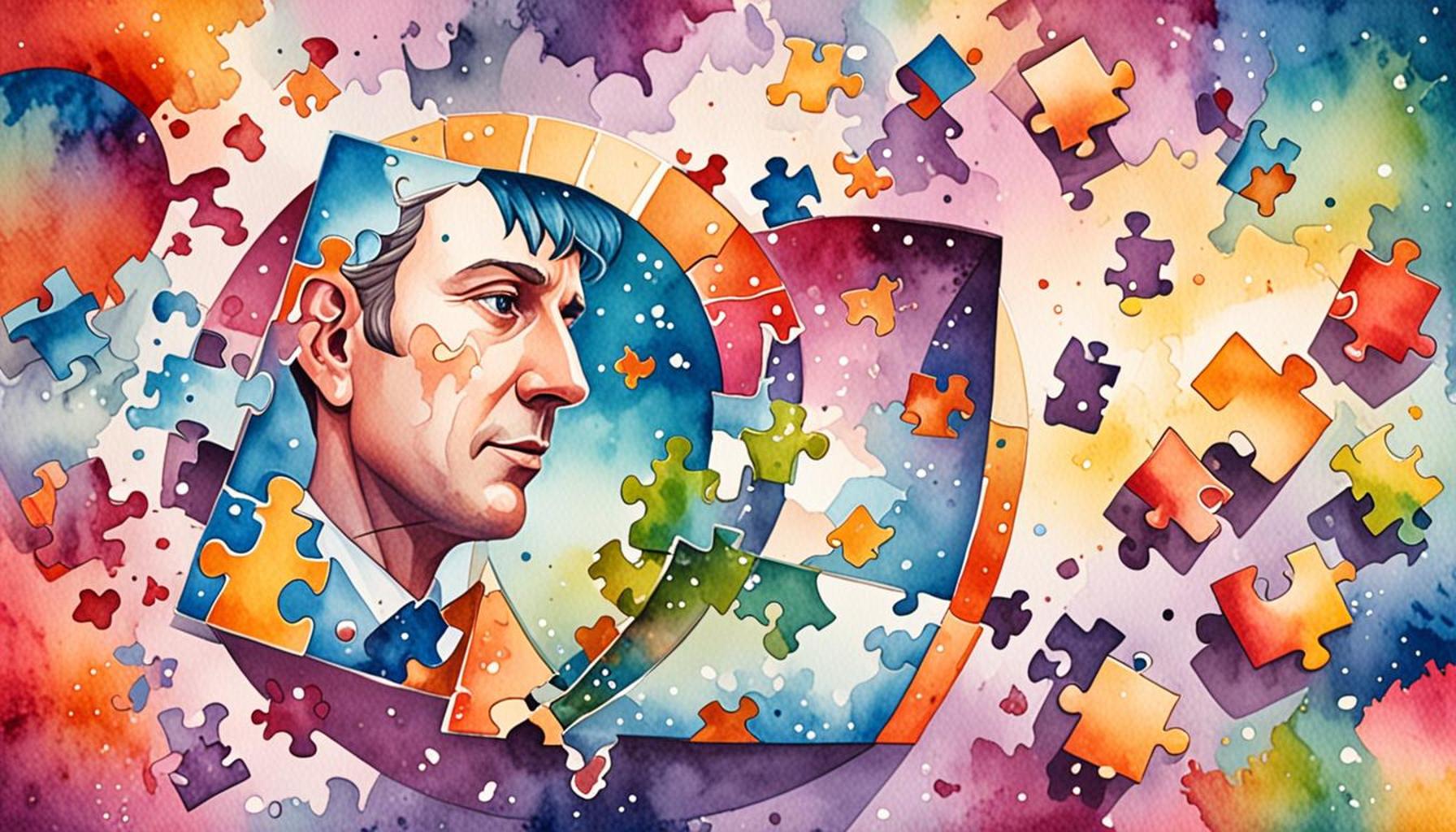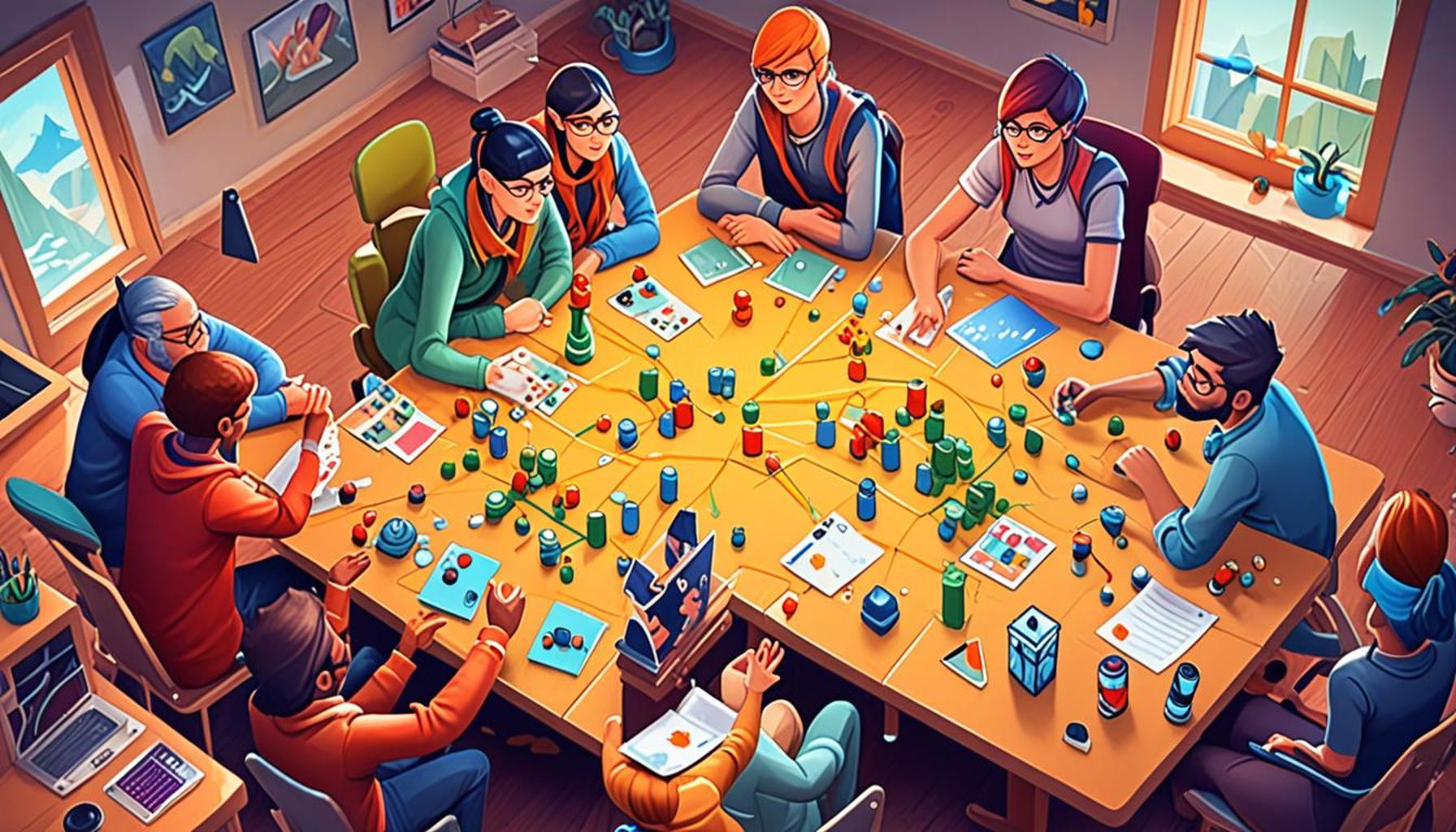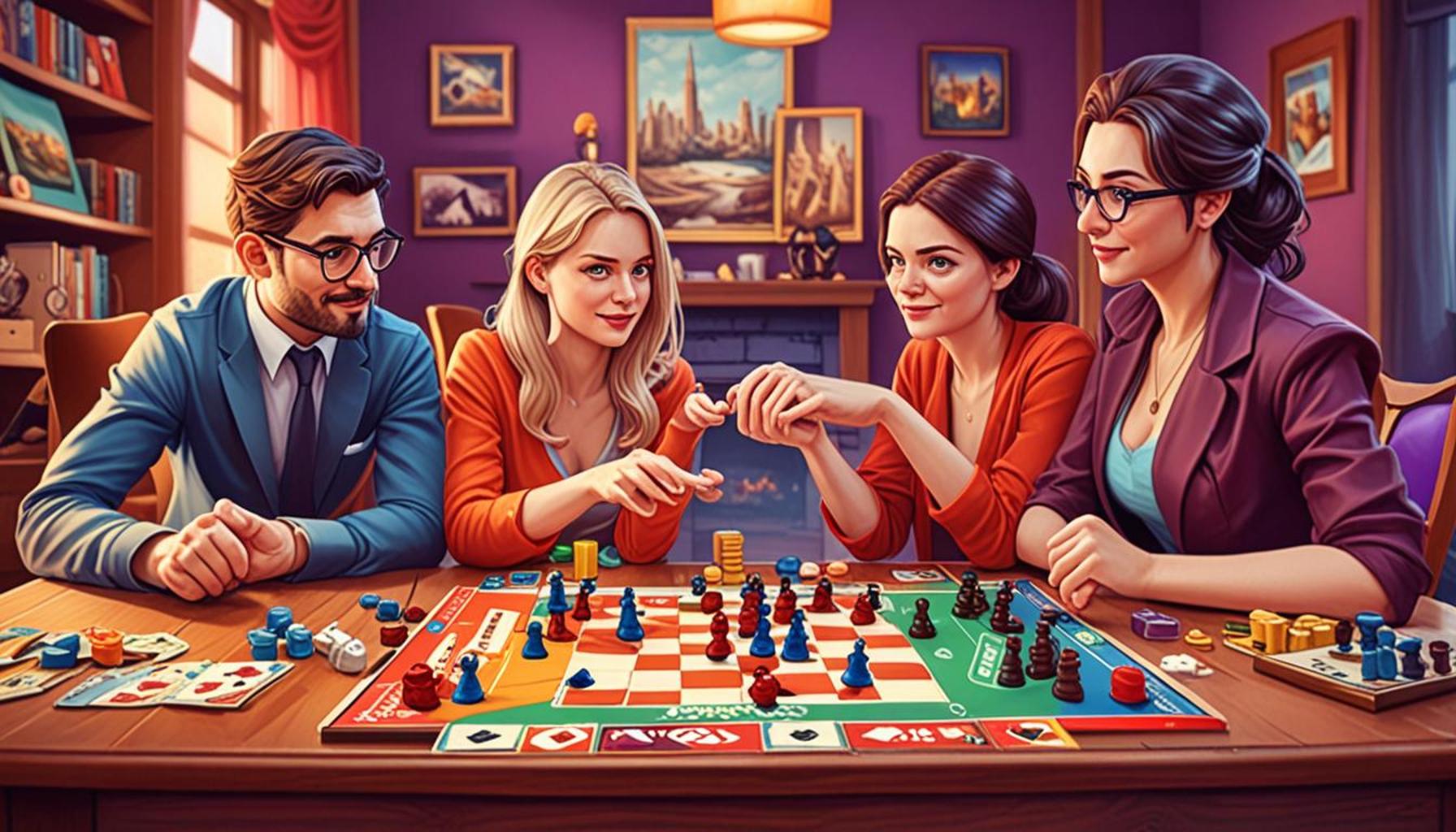Lateral Thinking Strategies: How Puzzles Stimulate Creativity

Exploring the Impact of Puzzles on Creative Thinking
In today’s fast-paced world, where creative innovation drives progress, harnessing our mental faculties through a variety of activities is essential. One often-overlooked method is engaging with puzzles. These seemingly trivial pastimes not only provide entertainment but are also powerful tools for enhancing our cognitive abilities and creative thinking.
Consider a simple riddle: “I speak without a mouth and hear without ears. I have no body, but I come alive with the wind. What am I?” When faced with such a challenge, individuals must engage in creative problem-solving, leading to numerous cognitive benefits. Puzzles compel us to think differently, explore new perspectives, and uncover unexpected solutions.
- Enhances Problem-Solving Skills: Working through puzzles demands critical thinking and encourages players to adopt unconventional approaches. For instance, a Sudoku puzzle requires not just logical reasoning but also a willingness to backtrack and try different strategies when a block feels unsolvable.
- Stimulates Mental Agility: Puzzle-solving without pressure cultivates quick thinking. Whether it’s a crossword or a logic puzzle, participants hone their ability to connect disparate ideas. This heightened mental agility translates to better performance in real-world tasks, from navigating complex workplace challenges to making quick decisions in personal situations.
- Encourages Out-of-the-Box Thinking: Many puzzles, especially lateral thinking riddles, push participants to transcend conventional reasoning. Engaging in these unique mental exercises develops an appreciation for creative thinking, empowering individuals to devise innovative solutions in everyday challenges.
The variety of puzzles available strengthens not only our cognitive capabilities but also our overall creativity. Each new puzzle poses a distinct challenge, vital for:
- Boosting Creativity: Every time you confront a new puzzle, your brain is pushed to adapt and draw upon creative thinking. The process of discovering patterns or deciphering codes activates unused neural pathways, allowing for bursts of creativity outside of the puzzle context.
- Building a Resilient Mindset: The process of perseverance and ultimately overcoming difficulties in puzzles fosters a sense of accomplishment. This resilience is essential as it prepares participants to tackle life challenges with a positive, determined attitude.
- Promoting Collaboration: Many puzzles, especially escape room scenarios or team-based logic puzzles, emphasize the importance of teamwork. These group activities encourage collaboration, communication, and the sharing of diverse ideas, all critical attributes for success in any collaborative setting.
Understanding how these factors contribute to creativity enhances our appreciation of puzzles as more than mere entertainment. By examining the synergy between puzzles and creative thinking, individuals can unearth pathways for personal enrichment and professional development. Engaging with puzzles doesn’t just sharpen our minds; it transforms our creative landscape, opening doors to new possibilities we might not have previously considered.
Join us on this enlightening journey as we delve deeper into the relationship between mental exercises like puzzles and the boundless real-world applications they inspire. Who knows? You might just unlock your next great idea by simply solving a puzzle.

DISCOVER MORE: Click here to delve into strategic thinking in board games
Puzzles as Catalysts for Creative Thinking
Puzzles serve not just as a pastime but as a catalyst for creativity, engaging our minds in a way that few other activities can. They challenge us to step outside the box and embrace lateral thinking strategies, fostering a mindset that is essential for innovation. By posing unique challenges, puzzles invite players to explore multiple angles and uncover solutions that may not be immediately evident.
Consider the classic brain teaser: “A man is pushing his car along a road when he comes to a hotel. He shouts, ‘I’m bankrupt!’ Why?” Such puzzles require the solver to think beyond the conventional and ascertain missed details that could lead to numerous meanings. This exercise in lateral thinking creatively enhances our ability to approach problems differently.
- Encouraging Diverse Perspectives: Engaging with puzzles allows individuals to explore various viewpoints. This diversity of thought is crucial for creativity, as it encourages the integration of different ideas and experiences. When individuals tackle a logic puzzle together, they often suggest multiple methods to arrive at the solution, showcasing how collaborative problem-solving can yield better creative outcomes.
- Activating Different Parts of the Brain: Neuroscience indicates that puzzle-solving activates various brain regions responsible for visual-spatial processing, working memory, and executive function. As these areas light up during heightened engagement with puzzles, fresh thought patterns and innovative ideas begin to emerge. This can bolster mental flexibility, essential for both personal and professional growth.
- Creating a Safe Space for Failure: Puzzles naturally encourage trial and error, allowing players to learn without the fear of negative consequences. This environment promotes experimentation, where making mistakes is seen as a vital part of the learning process. This mindset is important in creative fields, where failure often precedes breakthrough ideas.
Engaging with puzzles fosters an understanding that challenges can be approached with a sense of curiosity. The process of understanding the layers behind a riddle or the rules governing a logic puzzle magnifies our ability to dissect and analyze real-world problems. For instance, employees tasked with navigating complex workplace dilemmas often draw upon investigative skills developed through puzzle-solving.
Moreover, the habit of engaging with lateral thinking puzzles helps fortify a creative skill set that extends beyond any single challenge. This skillset benefits various facets of life, from honing decision-making in high-pressure situations to enhancing personal relationships through empathetic communication. Each puzzle solved acts as a building block in constructing a rich tapestry of inventive solutions that influence our daily lives.
In essence, harnessing the power of puzzles enables individuals to refine their cognitive toolbox. As we explore the effects of various types of puzzles on creativity, we can uncover insights that change the way we approach challenges, both at work and in our personal lives. The journey into the intricacies of lateral thinking is not merely an academic exercise; it is an exploration of how we can think better, solve creatively, and thrive in an increasingly complex world.
In the world of lateral thinking, puzzles serve as a unique bridge between logic and creativity, offering mind challenges that extend beyond traditional problem-solving techniques. The essence of lateral thinking lies in its challenge to our cognitive frameworks, allowing us to approach problems from various angles and uncover innovative solutions. By engaging with puzzles, individuals can enhance their creative problem-solving skills and develop a more flexible mindset.
One prominent advantage of puzzles is their ability to foster mental agility. As participants navigate through multi-layered puzzles, they practice thinking outside the box. This exercise sharpens their ability to pivot from conventional thought patterns to more inventive approaches. For instance, riddles that require participants to view situations in unconventional ways can break down mental barriers, compelling individuals to rethink their assumptions and generate out-of-the-box solutions.
Moreover, puzzles can significantly aid in enhancing collaborative skills. Group puzzle-solving exercises create an interactive environment where diverse perspectives can flourish. This not only leads to richer discussions but also helps build a sense of community among participants. The diverse thought processes seen in team settings emphasize the need for open-mindedness and adaptability, traits essential for any creative endeavor.
| Category | Benefits |
|---|---|
| Mental Agility | Enhances flexibility in thinking and problem-solving. |
| Collaborative Skills | Encourages teamwork and diverse perspectives for innovative solutions. |
Incorporating puzzles into daily routines provides a fun avenue for both individuals and teams to sharpen their creative thinking skills. As research continues to uncover the cognitive benefits of engaging with these brain teasers, numerous methods can be explored to integrate puzzles into various settings—be it at home, in classrooms, or workplace environments. The potential for growth in both personal and professional realms through puzzles is monumental, inviting individuals to explore the fascinating link between lateral thinking and creativity.
DISCOVER MORE: Click here for insights on teamwork and cognitive skills
The Role of Lateral Thinking in Problem-Solving
Lateral thinking introduces an innovative framework for tackling challenges, emphasizing creativity over conventional reasoning. In this context, puzzles serve as microcosms of larger problem-solving scenarios we encounter in everyday life. They help develop a mindset that values exploration, experimentation, and a willingness to shift perspectives.
Consider the significance of lateral thinking puzzles like the famous “Nine Dots” challenge, where one must connect nine dots arranged in a square using just four straight lines without lifting the pencil from the page. This puzzle exemplifies how lateral thinking often requires one to extend beyond the apparent constraints and think creatively. When presented with such problems, individuals are prompted to re-evaluate their assumptions and challenge preconceived notions, which is crucial for creativity and innovation.
- Enhancing Analytical Skills: One instrumental aspect of lateral thinking facilitated by puzzles is the enhancement of analytical skills. Engaging with puzzles sharpens one’s ability to dissect information and assess variables, fostering a sharper awareness of how different elements interact within a problem. This refined analytical prowess is invaluable in fields ranging from science and technology to marketing and design, where problem-solving is paramount.
- Boosting Confidence in Creative Solutions: When individuals successfully navigate puzzles, even seemingly insurmountable ones, their confidence is significantly boosted. This newfound assurance can translate into a greater propensity to explore unconventional solutions in real-world scenarios. For example, companies like Google and 3M have famously adopted a culture of rewarding creative thinking among their employees, encouraging them to think outside conventional parameters and devise innovative products and services.
- Fostering Team Collaboration: Puzzles often serve as engaging team-building exercises, reinforcing the notion that diverse minds can yield robust solutions. When team members collaborate on a complex puzzle, they combine their unique perspectives, leading to innovative approaches that a single individual might not conceive alone. This cognizance of the collective creative potential encourages a collaborative spirit essential for thriving in dynamic work environments.
As individuals grapple with the complexities of lateral thinking puzzles, they cultivate an essential skill set that enables them to confront real-life challenges with enhanced creativity and confidence. Industries across the United States have begun integrating such activities into their workforce training to stimulate creative thinking and improve problem-solving capabilities. For instance, organizations may introduce puzzling scenarios during meetings or workshops, allowing teams to conquer tasks while simultaneously boosting morale.
This fascination with puzzles is not limited to formal settings; it transcends into casual environments and social interactions as well. Families often engage in puzzle-solving together, whether it be through riddles at the dinner table or collaborative board games, reinforcing bonds while nurturing creative thinking skills. Similarly, educational systems can encourage lateral thinking by incorporating puzzles into curricula, fostering future generations adept in creative problem-solving.
The cumulative benefits of embracing puzzles as part of a lateral thinking strategy are clear. They not only enhance cognitive flexibility but also nurture a work culture that values innovation. In today’s fast-paced world, where adaptability and creativity are crucial, puzzles provide an effective means of honing these essential skills, paving the way for greater success in personal and professional endeavors.
DISCOVER: Click here to learn about memory enhancement strategies across cultures
Conclusion
In a world defined by rapid change and complex challenges, lateral thinking strategies have emerged as essential tools for fostering innovation and creativity. The engagement with puzzles not only serves as entertainment but as a powerful mechanism to enhance our cognitive abilities and break free from rigid thought patterns. By tackling puzzles, individuals learn to look beyond conventional solutions, unlocking pathways to creative breakthroughs that can be applied in both professional and personal contexts.
The various benefits of employing puzzles in developing lateral thinking cannot be overlooked. As highlighted, they enhance analytical skills, build confidence in creative solutions, and facilitate team collaboration, creating an atmosphere ripe for ingenuity. Employers across the United States are increasingly recognizing the value of these strategies, integrating playful yet challenging puzzles into their training programs to cultivate an innovative workforce.
Furthermore, the affinity for puzzles extends into informal settings, enabling families and friends to bond while sharpening their creative faculties. Educational institutions can also play a pivotal role by incorporating lateral thinking puzzles into their curricula, ensuring that future generations possess the tools necessary to navigate the complexities of the modern world with inquisitive minds.
Ultimately, embracing puzzles as a cornerstone of lateral thinking strategies provides a significant competitive edge. As we nurture our creativity through these engaging brain teasers, we position ourselves to not only solve complex problems but to thrive in an ever-evolving landscape. Therefore, the next time you encounter a puzzle, recognize it as a gateway to innovative thinking, and consider its potential to reshape the way you approach challenges, both big and small.


